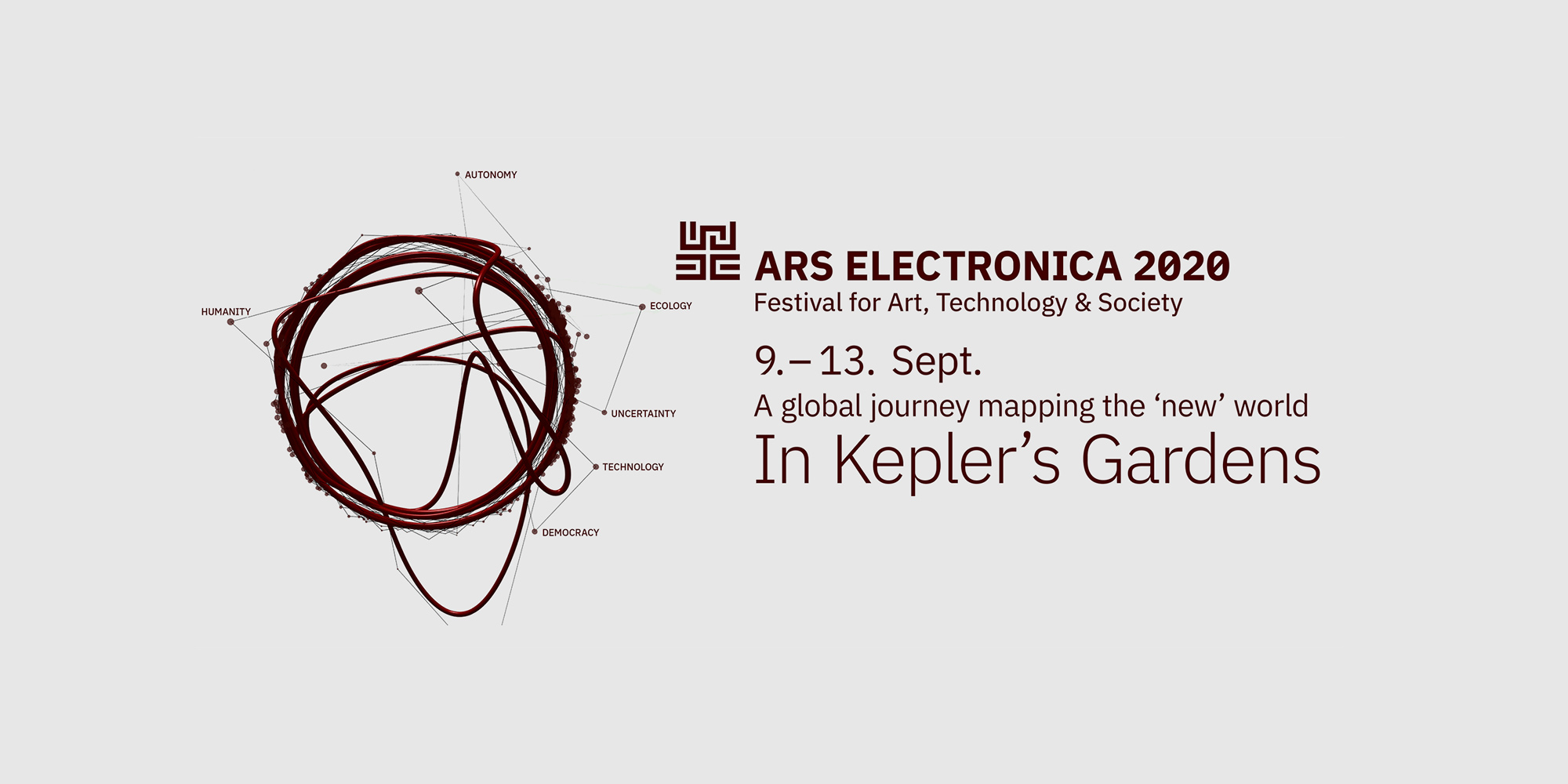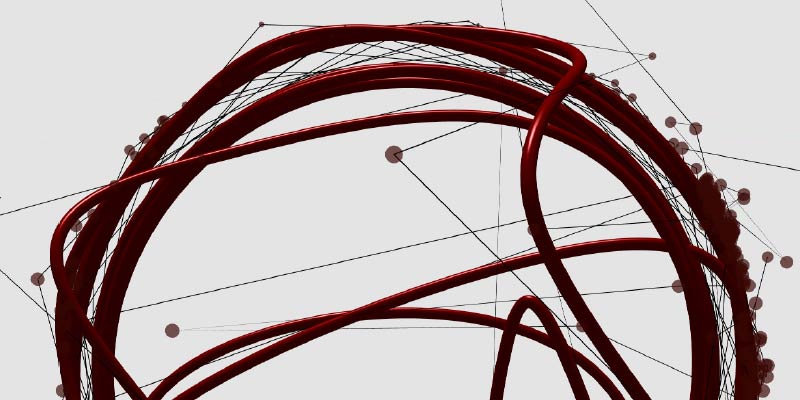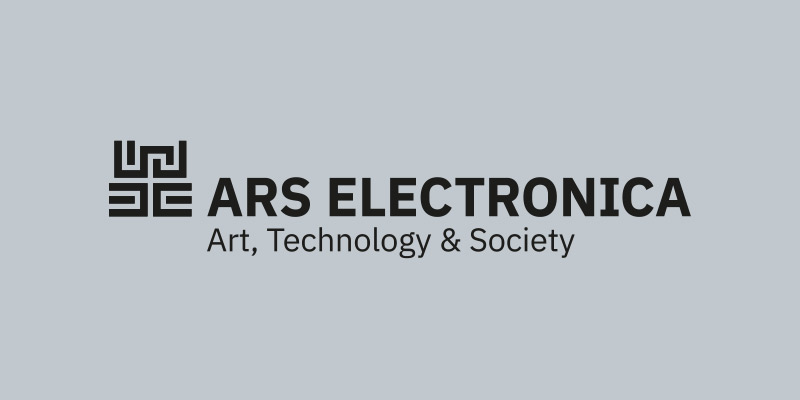Robotics
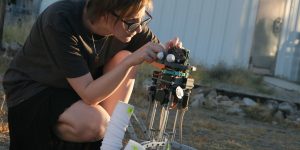
Sarah Petkus’s Noodle Feet visits the Pavilion of Knowledge
Sarah Petku’s Robot called Noodle Feet is visiting the Pavilion of Knowledge. Join and find out how the Pavilion of Knowledge looks like.
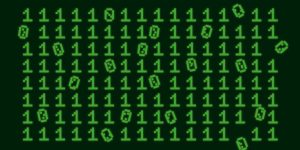
Future Life Exhibition
Curated by: Karin Ohlenschläger
Marco Barotti (IT), Clams, interactive installation, 2019 Disnovation.org (FR), Online Culture Wars (in collaboration with Baruch Gottlieb, 2018/19; The Persuadables), video, 2019 Quimera Rosa (ES/FR), Trans*Plant: May the Chlorophyll Be With/In You, mix-media installation, work in progress since 2016 Anna Ridler (GB), Mosaic Virus, GANs generated video installation, 2019 Robertina Sebjanic (SI) & Gjino Sutic (HR), Aqua Forensic, installation, 2018
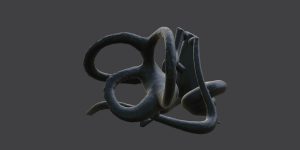
Ars Electronica Barcelona Garden Show
EXHIBITION: The show will present the most recent productions and acquisitions of .BEEP {collection;}: the historical works Das tangible Bild and The Endless Sandwich both by Peter Weibel and Vestibular_1 by Albert Barqué-Duran & Marc Marcenit. Three brand new works will also be exhibited, produced thanks to grants awarded to Mónica Rikić by New Home of Mind, Roc Parés by Doble Consciència and Santi Vilanova (Playmodes) by Forms. The three projects have been selected through a public call of the Institut Ramon Llull, NewArtFoundation and Hangar.

Facing Uncertainty and Its Discontents
Pau Alsina (ES), Roc Parés (ES/MX), Marina Garcés (ES), Joan Soler-Adillon (ES), Tere Badia (ES), Pau Waelder (ES).
ROUNDTABLE: While we get used to dealing with those events in which the probability of a certain situation occurring is not known: what does it mean to live in a context of uncertainty? How to take the risk of uncertainty and try to slide their gains? How arts, sciences, technologies and thought have learned from it and propelled their practices of uncertainty?
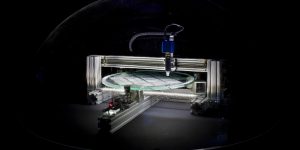
EXSOMNIUM
Danny Bazo (US), Marko Peljhan (SI/US), Karl Yerkes (US)
From 2013 to 2016, Marko Peljhan, Karl Yerkes and Danny (Daniel) Bazo developed the SOMNIUM project, dedicated to the research and representation of exoplanetary worlds in our galaxy. The work was the result of a three year research residence at the SETI Institute. EXSOMNIUM is its evolved computational continuation.

Jugend hackt remote: digital gardening
Jugend hackt Austria (AT), c3 (HU), mb21 (DE), ArtechLAB (NL), Ars Electronica (AT)
We present the outcome of Jugend hackt remote: digital gardening, which is a hackathon for young people from 12 to 18 years. It took place during August 29th and was inviting young coders from Austria, Germany, Hungary and the Netherlands
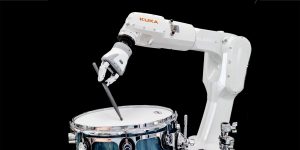
robodrum
The robodrum project is a robotic setup consisting of 4 KUKA robotic arms equipped with drums, which doesn’t aim to replicate a human performance exactly, nor to be better or faster than one. Instead, it becomes an algorithmic system that allows visitors to leave acoustic traces.
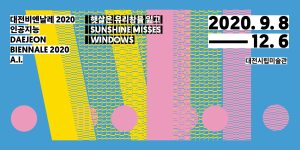
Panel – Daejeon Biennale 2020
AI: Sunshine Misses Windows Garden has a long history as the form of art in Korea. Garden is more than a place for enjoyment of plants and other forms of nature. It embodiment of a philosophy of life. The garden reflects the transformation of a vaster cosmic universe. If we glimpse at garden with the lens of Artificial Intelligence, garden is the special time and space where nature and human beings coexist, society and human beings interact, and human beings and A.I. pursue co-evolution.
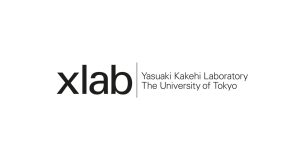
Yasuaki Kakehi Laboratory, The University of Tokyo
Yasuaki Kakehi (JP)
Under what kind of environment do they continue to create works which are part of University lab’s research? What equipment do you use? What kind of process do students carry out? We take a deep dive into the Lab from different perspectives, including how Ars Electronica is positioned for education.
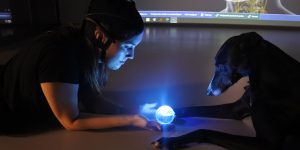
Sneak Peak into DDTlab (360° video view)
RUK – DDTlab (SI), AFormX (SI), Arctur (SI), Yaskawa (SI), STPŠ (SI)
In DDTlab we developed several projects where we linked the human brain and output devices. The NeuroFly project involves flying an airplane using only brain waves, while NeuroRobo will have you manipulating the movements of robots with thoughts.
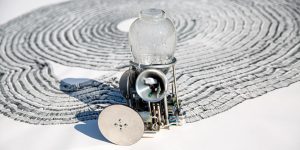
Machine in Flux - Wood
Sunjoo Lee (KR), Ko de Beer (NL)
A documentation and cartography of time and environment inspired by the growth mechanism of the tree’s annual rings. The machine sensitively responds to changes of light, wind, temperature, humidity and sound – and inscribes these influences using ink on paper.
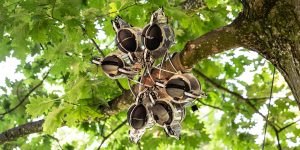
A Diverse Monoculture
Jip van Leeuwenstein (NL)
”A Diverse Monoculture” is a new family of artificial species, which together form a hive of new predators. These predators are used in an attempt to restore the balance within our ecosystem. The first robot predator in the family is the Dionea Mechanica Muscipula, a creature designed to attract and digest oak processionary moths. The Dionaea Mechanica Muscipula is developed to reduce the population of oak processionary moths, an increasing plague.
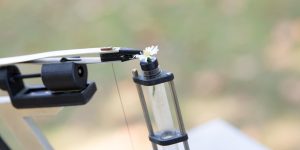
lovesmenot
Sebastian Wolf (DE)
lovesmenot is part of an ongoing series of automata exploring our relationship with machines and the absurdity of over-automation. In this work, a machine plucks the petals of a daisy one by one, looking for answers to a question that will never be revealed to the observer. It hereby imitates a typically human action, a rite of sorts that usually attains its meaning solely through the human element. The machine does not serve anyone but itself, the answers obtained are never revealed.
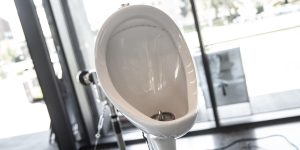
Elsa On The Moon
Mathieu Zurstrassen (BE)
Elsa on the Moon is a kinetic sculpture tribute to Elsa Von Freytag Loringhoven, eccentric baroness and contemporary of Marcel Duchamp; ambiguously attributed with the creation Fountain, in 1917. Or was it Louise Norton? The work consists of a robotic leg capped with a ceramic urinal. The device is balanced with counterweights through an extended aluminum arm.
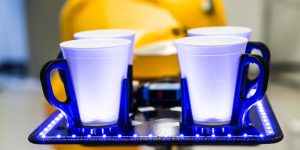
Robots in Action - fast and sensitive!
Institute of Robotics, Johannes Kepler University Linz (AT)
Robots can be strong and sensitive at the same time! They can move extremely fast but also handle fragile objects like champagne glasses. Imagine you want to carry a tray with several glasses of filled liquid without spilling –and you may even be adventurous and try to wave the tray over your head. Most of us will fail to perform such a stunt without breaking some glasses, but our robots are smart and agile enough to do just this. The Institute of Robotics at Johannes Kepler University will open its lab and showcase what modern industrial robotics are, and how fun they can be.

Magic Darts or, when every throw is a perfect hit
Andreas Stelzer (AT), Rudolf Scheidl (AT)
Darts is a popular game, but difficult to master. In this version of darts, players always hit the bullseye. What looks like witchcraft is revealed as a mechatronic system, with a novel microwave sensor network and ultrafast hydraulic actors interacting. Such technologies will affect our future daily life, e.g. in self driving cars, with microwaves allowin us to see in the dark, with fog or dust; or in exoskeletons, where hydraulic actuation enables ultimate compactness.
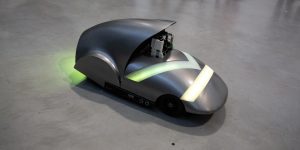
K – JKU’s Interactive Robocar
Institute for Machine Learning, LIT AI Lab, LIT Robopsychology Lab, Johannes Kepler University (AT); Inseq Design (AT)
K is a likeable little robocar: small in size, but very smart on board! Named after JKU’s famous patron, Johannes Kepler, it drives itself autonomously on changing terrain, can predict the movement patterns of pedestrians and playfully interacts with its environment.
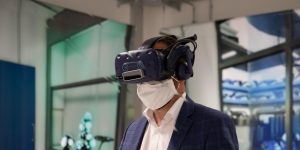
Robots Talking To Me
LIT Robopsychology Lab, Johannes Kepler University (AT)
How should robots communicate with people? What voice makes AI assistants sound trustworthy? Do we even have to listen to robots or should we always be in command ourselves? Under the title *Robots Talking to Me*, the *LIT Robopsychology Lab* presents four installations that give tangible expression to questions of human-machine relationships and invite participation.
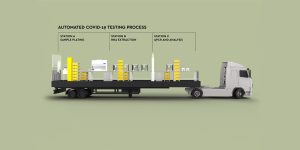
CONTAIN - Mobile COVID19 Emergency Testing Facilities
Open Cell (UK)
CONTAIN units are rapidly deployable COVID-19 testing laboratories housed in shipping containers. The design allows transportation to any location through standard shipping services. Automated RT-qPCR protocols can deliver 2,400 tests per unit in 24 hours.
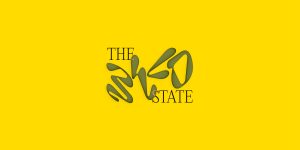
The Wild State
Campus
THE WILD STATE is the title of this year’s Kunstuniversität Campus activities at Hauptplatz Linz during Ars Electronica Festival 2020 from 9. – 13. September 2020. Existing since 2002, the intention of the Campus format is to invite outstanding international universities working in the academic fields of media arts and design. This year with an exhibition with contributions by various partner universities, as well as the departments Interface Cultures, Visual Communication, Fashion&Technology, Art Education, and Design: Tech.Tex. Special events comprise façade projection “Interfacing Hauptplatz”, the Internet flea market “Yami-ichi”, discursive format “Agora Digitalis” and the top notch nightline “Sound Campus”.
